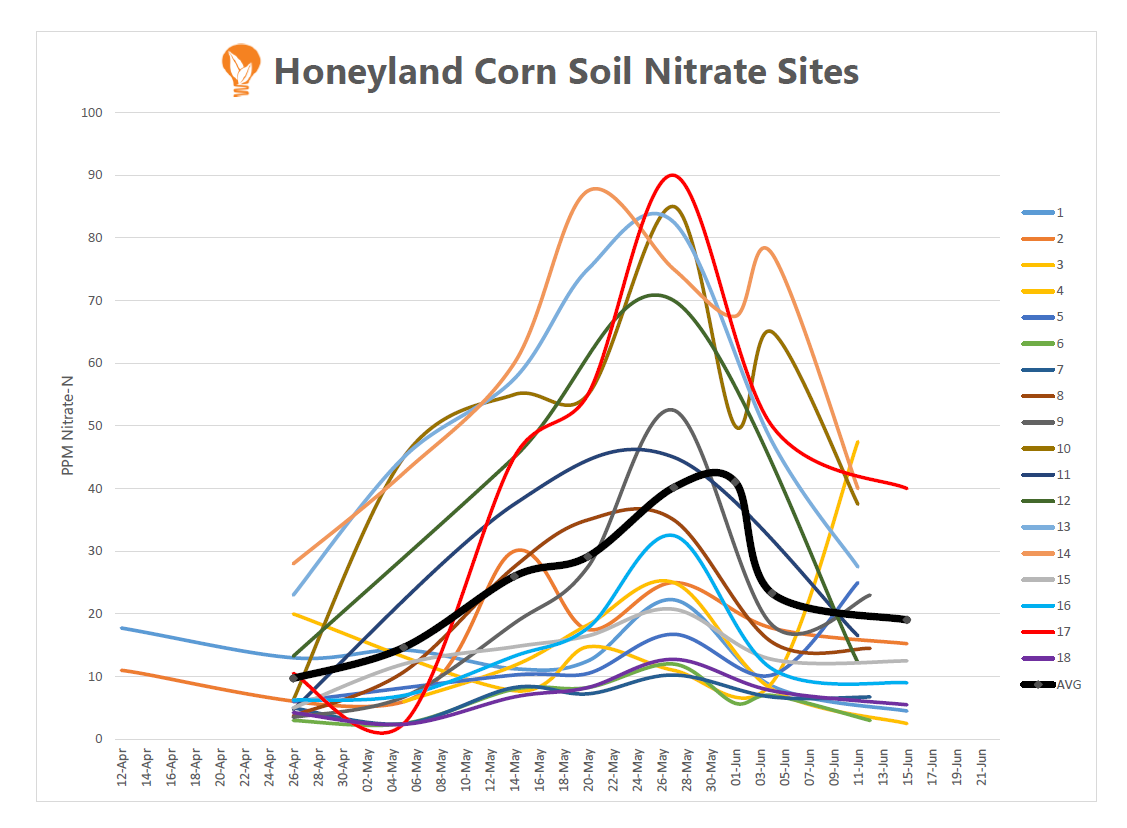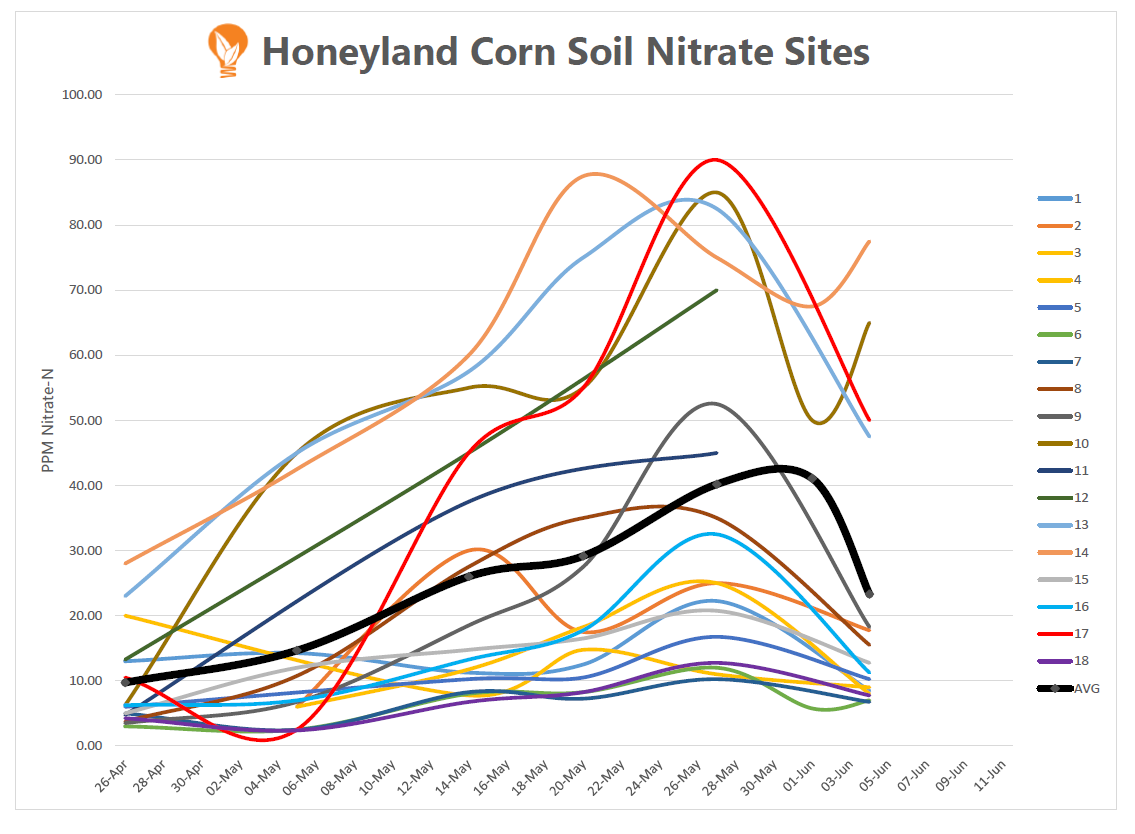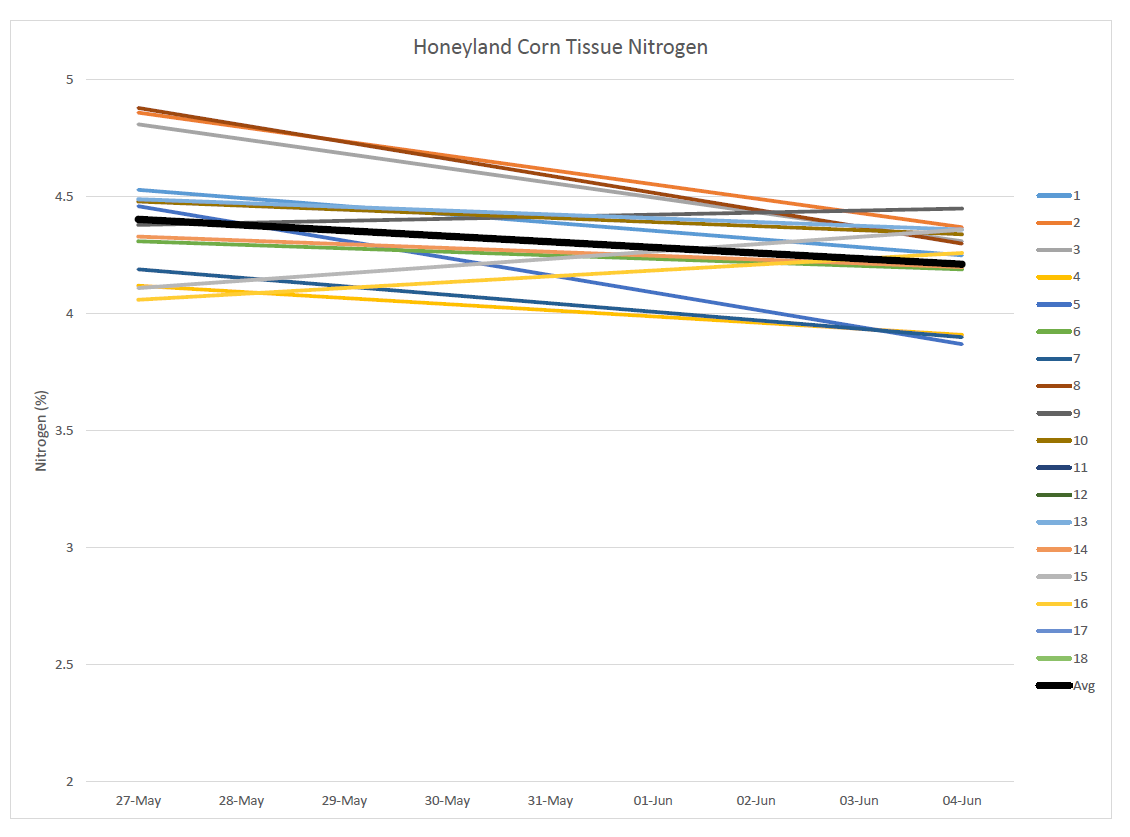Since I have been dwelling so much on nitrogen this year I thought it would be a good idea to re-affirm the importance of nutrient balance! This year we added a new parameter called the nutrient balance index (NBI).
NBI interpretation:
0-50 – Excellent
50-100 – Some imbalance
100-175 – Imbalances are present
175+ – Severe imbalance
Plant tissue testing is an under-utilized tool that can tell us a great deal about the nutrients available to the crop. We use soil testing to measure the nutrients we think will be available to the plant, but a host of factors (not only chemical, but also physical, biological and environmental) contribute what is actually available to the plant.
With crops in the reproductive stages it is an excellent time to “ask the plant how it feels” about the growing conditions.
Sampling Strategies:
Sample Good vs Bad, Light vs Dark, etc – This will allow you to see quantify the differences you see visually
Don’t sample the absolute worst plants – Especially leaves that are dead or damaged. Try to sample leaves that are poor but not the worst.
Corn – Corn at tasseling should be sampled from the ear leaf.
Soybeans – Sample the most recently matured trifoliate.
Take a soil sample – Adding a soil sample from the same spot can help you confirm the results of your tissue test and allows for better understanding of the interaction between your soil and the plant.
More information on tissue analysis is available here:




